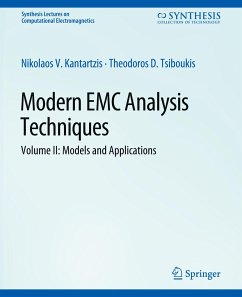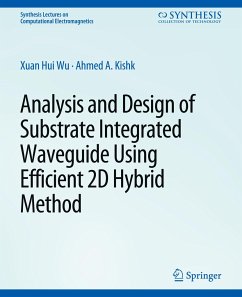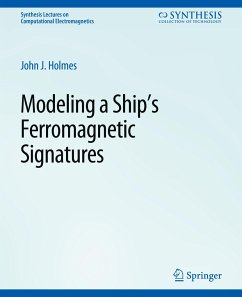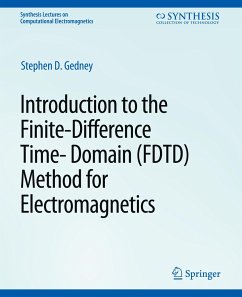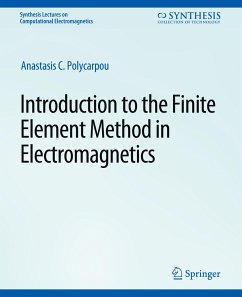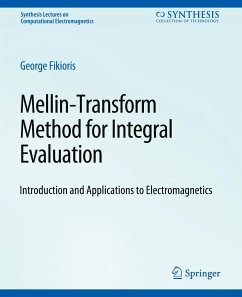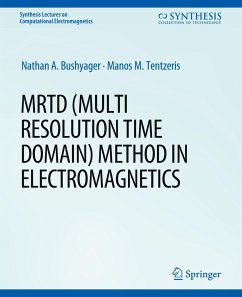
Modern EMC Analysis Techniques Volume I
Time-Domain Computational Schemes

PAYBACK Punkte
0 °P sammeln!
The objective of this two-volume book is the systematic and comprehensive description of the most competitive time-domain computational methods for the efficient modeling and accurate solution of contemporary real-world EMC problems. Intended to be self-contained, it performs a detailed presentation of all well-known algorithms, elucidating on their merits or weaknesses, and accompanies the theoretical content with a variety of applications. Outlining the present volume, the analysis covers the theory of the finite-difference time-domain, the transmission-line matrix/modeling, and the finite i...
The objective of this two-volume book is the systematic and comprehensive description of the most competitive time-domain computational methods for the efficient modeling and accurate solution of contemporary real-world EMC problems. Intended to be self-contained, it performs a detailed presentation of all well-known algorithms, elucidating on their merits or weaknesses, and accompanies the theoretical content with a variety of applications. Outlining the present volume, the analysis covers the theory of the finite-difference time-domain, the transmission-line matrix/modeling, and the finite integration technique. Moreover, alternative schemes, such as the finite-element, the finitevolume, the multiresolution time-domain methods and many others, are presented, while particular attention is drawn to hybrid approaches. To this aim, the general aspects for the correct implementation of the previous algorithms are also exemplified. At the end of every section, an elaborate reference on theprominent pros and possible cons, always in the light of EMC modeling, assists the reader to retrieve the gist of each formulation and decide on his/her best possible selection according to the problem under investigation. Table of Contents: Fundamental Time-Domain Methodologies for EMC Analysis / Alternative Time-Domain Techniques in EMC Modeling / Principal Implementation Issues of Time-Domain EMC Simulation





